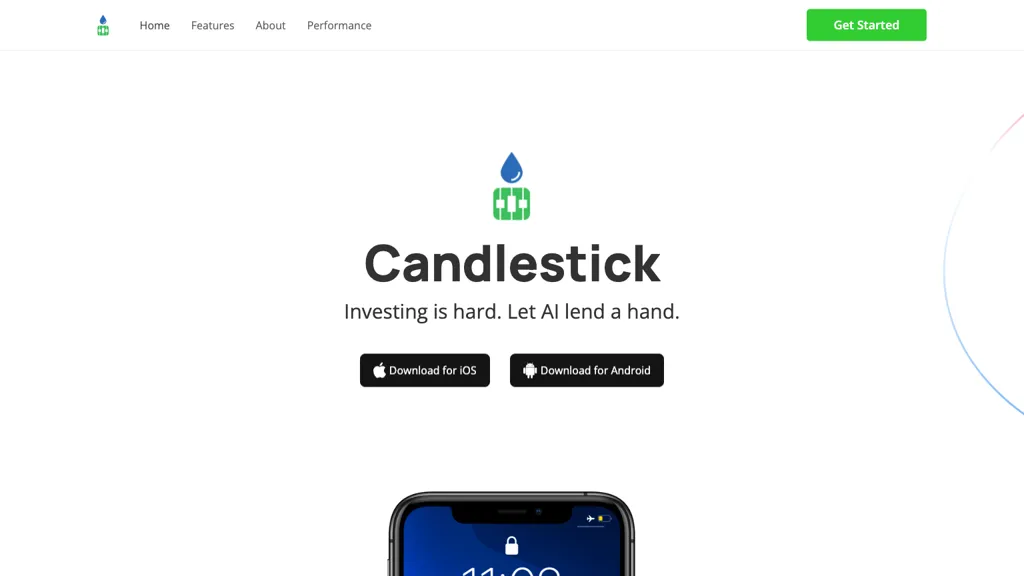Top 10 Tips To Evaluate The Customer Support Of Ai Platforms For Stock Prediction/Analyzing Trading
Customer support can be the most important aspect when selecting an option for AI analysis and prediction of stocks. Reliable and responsive support will make a huge difference in solving issues, increasing platform usage, and ensuring an enjoyable trading experience. These are the top 10 suggestions about how to assess the support provided by these platforms.
1. Evaluation of support availability
24/7 support: Verify if your platform provides support round-the clock, which is important to ensure real-time trading and access to global markets.
Hours of operation: If you don't have 24/7 support, make sure support is available for you during trading hours.
Coverage for holidays: Check whether support is available on weekends or holidays, as well as closing of markets.
2. Test Response Times
Initial response: Test the support team by sending an easy test question.
Time to resolve It is not enough to simply acknowledge the problem, but also determine the time it will take you to solve it.
Live chat: If live chat is available test the responsiveness and effectiveness.
3. Review the Support Channels
Multi-channel support: Make sure the platform supports you via multiple channels (e.g. email or phone call, live chat, and social media).
Preferred channel: Verify that the support channel you prefer (e.g. phone, chat) is available and reliable.
Self-service solutions are available Find a comprehensive FAQ, a forum for community members, or a comprehensive knowledgebase to resolve your issues fast.
4. Examine Support Qualities
Expertise: Support agents must be knowledgeable about the platform and trading issues.
Problem-solving: Find out if agents can effectively resolve complex issues, or escalate them as appropriate.
Professionalism: Make sure that the support interactions are professional, friendly, and helpful.
5. It is recommended to look for account managers who are dedicated to your needs.
Support Premium: Make sure that institutions or higher-tiered plans have access to account managers.
Personalized assistance: Assess if account managers provide tailored support and proactive guidance.
Relationship building: Make sure your account managers are in contact to establish relationships that last for a long time.
Review Documentation
Knowledge base: Ensure the platform is well-organized and searchable knowledge base including tutorials, guides and troubleshooting advice.
Video tutorials - Find out whether your platform provides videos, webinars or video tutorials that are suitable for visual learners.
API documentation. If you are a programmer, you should check whether the platform provides clear and clear API documentation.
7. Evaluation of community and peer support
Forums for users. Check if your platform has an active forum or a user community where you can learn tips and techniques.
Social media forums: Find informal groups on social media (e.g. Reddit. Facebook. LinkedIn) that discuss the platform.
Community engagement: Determine whether members of the team actively participate in forums or discussions within the community.
8. Evaluate Escalation Processes
Issue escalate. Make sure that you have a clear procedure for escalating unresolved issues to the management or staff at a higher level.
Follow-up. Make sure whether support is following up when the issue is fixed.
Feedback loop: Check whether the platform is collecting user feedback to enhance support services.
9. Test Support in critical situations
Contact customer support during times of high-volatility to check how they respond.
Technical issues: Simulate a technical issue (e.g. login issue, data discrepancy) to observe the way support tackles it.
Trade execution - Verify that support is available to assist in urgent trade-related issues (e.g. orders that are not executed, delays in execution).
Review User Feedback
Online reviews: Read user reviews on platforms like copyright or G2 to gauge about the overall level of satisfaction with the customer service.
Look for testimonials and case studies that focus on positive experiences.
Visit the platform to find out how it handles complaints or negative feedback, as well as support.
Bonus Tips:
Support during trial period Test the support of the platform using the demo or free trial period.
Language support: If not a native English speaker, check that support is available in your preferred language.
Training and onboarding: See whether the platform has onboarding classes or other training to aid new users to get started.
These suggestions will assist you to assess the support provided by AI platform for analyzing and predicting stocks. This way you can select a platform that has reliable, responsive and helpful support. Support from the customer that is prompt and efficient can enhance the overall experience. Have a look at the recommended best ai trading app info for more advice including ai investment app, ai stock market, ai for stock predictions, ai stocks, ai stock picker, ai for stock predictions, ai for stock predictions, ai for trading, chatgpt copyright, ai trading tools and more.

Top 10 Tips On Risk Management Of Ai Trading Platforms That Can Predict Or Analyze The Price Of Stocks.
Risk management is an important aspect of every AI trading platform. It helps to protect your investment while minimizing the risk of losses. A platform with strong risk management tools will help you navigate volatile markets, and make informed decisions. Here are ten tips to help you assess the risk management capabilities of these platforms.
1. Analysis of Stop-Loss and Take-Profit Features
Flexible levels: Ensure that the platform allows you to define take-profit and stop-loss levels for specific strategies or trades.
Find out if the platform allows the use of trails stops. They will automatically adjust themselves as markets move in your favor.
Make sure your platform allows you to place stop-loss orders that guarantee the closing of the trade at the price specified, even on unstable markets.
2. Utilize Position Sizing Tools
Fixed amount - Ensure that you can define the size of your positions relative to a set amount.
Percentage of Portfolio Determine if it is possible to set the position size in percentage of your portfolio total in order to manage risks in a proportional way.
Risk-reward ratio: Verify if the platform supports setting risk-reward ratios on individual trades or strategies.
3. Check for Diversification Aid
Multi-asset trading. Make sure your platform can handle multiple asset classes such as ETFs and Forex, Options, and Stocks.
Sector allocation check to determine what tools are that can be used to manage and monitor sector exposure.
Geographic diversification. Examine the platform you use allows you to trade in international markets. This can aid in spreading the risk across different geographic areas.
4. Review margin and leverage controls
Margin requirements: Ensure that the platform clearly states the requirements for margin for trading leveraged.
Find out whether you can establish limit on leverage to limit risk exposure.
Margin Calls: Verify that the platform has sent timely notifications of margin calls in order to avoid liquidation of your account.
5. Review the Risk Analytics Reporting
Risk metrics. Make sure that your platform is equipped with the most important risk indicators (e.g. VaR Sharpe Ratio) that are pertinent to the portfolio you are managing.
Scenario analysis: Check whether the platform permits users to create different scenarios of market to determine possible risks.
Performance reports: Ensure that the platform offers you comprehensive reports on performance, as well as returns that are risk-adjusted.
6. Check for Real-Time Risk Monitoring
Monitoring of portfolios - Make sure that the platform you select offers real-time monitoring to ensure your portfolio is protected.
Alerts: See if you can receive real-time notifications for events that are risk related (e.g. stop-loss triggers, breach of margins).
Check the dashboards for risk. If you wish to get a full picture of your risk, make sure that they're configurable.
7. Evaluation of Backtesting and Stress Testing
Stress testing: Ensure the platform you use allows you to test your strategies or portfolio in extreme market conditions.
Backtesting Check to see if your platform supports backtesting with historical data to evaluate the performance and risk.
Monte Carlo simulations: Verify if the platform uses Monte Carlo simulations to model a range of possible outcomes and assess risks.
8. Assess Compliance with Risk Management Regulations
Compliance with regulatory requirements: Ensure that the platform complies with the relevant regulations for risk management (e.g. MiFID II, Reg T, in the U.S.).
The best execution: Make sure that the platform follows the most efficient execution methods. Trades will be executed at the lowest price feasible to limit slippage.
Transparency. Verify that the platform is clear and clear about potential risks.
9. Check for User Controlled Risk Parameters
Custom Risk Rules: Make sure you can define custom rules for risk management (e.g. a maximum loss per day, a maximum size of a tradable position).
Automated risk controls: Check whether the system can automatically implement rules for risk management in accordance with the parameters you've set.
Check whether the platform permits manual overrides for automated risk control.
Study Case Studies, User Feedback Review Case Studies, User Feedback Case Studies
User reviews: Read reviews from customers to evaluate the platform's effectiveness at managing risk.
Case studies Look up cases studies or testimonials that demonstrate the ability of the platform to control risks.
Community forums: Check whether a platform is home to a community of users who are willing to share strategies and suggestions to manage the risk.
Bonus Tips
Free Trial: Try out the platform's features to manage risk in real scenarios.
Customer support: Ensure the platform provides a solid support regarding risk management related problems or queries.
Educational resources: Determine whether there are any educational resources on the best practices for risk management.
These tips will help you evaluate the risks management options provided by AI platform for predicting or analyzing stocks. You'll be able to choose a platform to ensure your capital is protected while minimizing potential losses. Effective risk management tools are crucial to navigate volatile markets and achieving long-term trading success. Have a look at the best invest ai for site advice including ai share trading, free ai stock picker, ai stock price prediction, can ai predict stock market, stocks ai, can ai predict stock market, ai stock analysis, ai copyright signals, stocks ai, invest ai and more.

Comments on “20 Top News For Picking AI Stock Predictions Platform Sites”